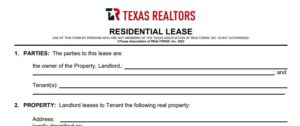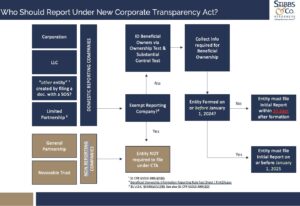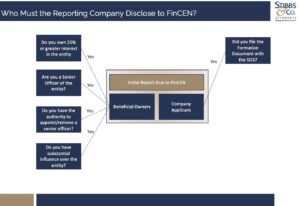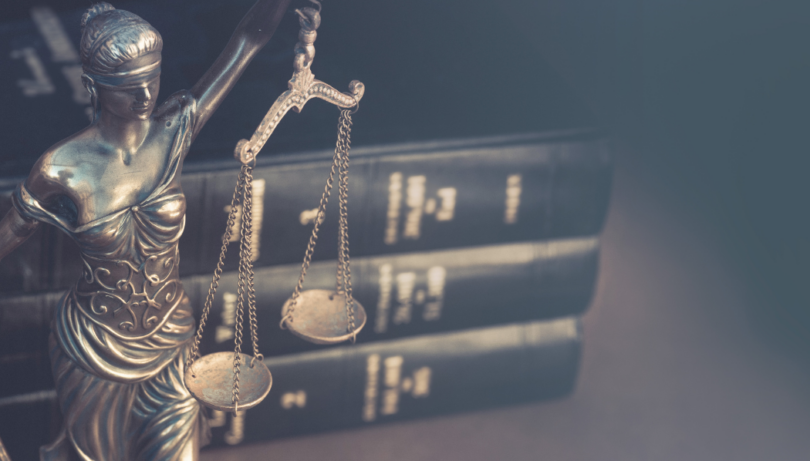Employment Law Spring Cleaning

I don’t know about you, but Spring Cleaning – yes, capital “S” and capital “C” – was a yearly ritual around my house when I was growing up, so much so that when I thought I would skirt the joy of this annual all-hands-on-deck familial undertaking after I left to go to college, my mother thoughtfully postponed the joy of Spring Cleaning until after I returned home for my summer break. Sheesh, Mom!!!
Spring Cleaning was more than just making sure the cement floors in the basement were clean enough to eat off. It was a time to go through the house and clear out what wasn’t needed and to either add things or to do repairs that were, kind of an exercise in preventative maintenance. The same goes for employers periodically reviewing their HR handbooks, policies, and procedures. While there’s no magic about doing it in the Spring of every year, it’s as good a time as any. Laws change. New court cases and regulations come out. Sometimes, it’s just a matter of the government issuing a new form to use. No matter what, keeping up to date can be just the kind of preventative medicine an employer needs to help defend some employment law issue down the road. So, thanks to my mother, here are a few suggestions as to some employment Spring Cleaning employers might want to do.
The ICE Man Cometh
Since Pres. Trump’s reelection, it’s no surprise that immigration issues and activity are a hot topic in the employment arena . . . again. Way back in 1986, Pres. Reagan signed into law the Immigration Reform and Control Act (ICRA). The ICRA did a lot of things. One thing it did was to make it illegal for employers to knowingly employ individuals not authorized to work in the U.S., and as a part of the ICRA, employers were required to obtain properly completed I-9 forms within three business days of hiring an employee. Since its creation, the U.S. Immigration and Customs Enforcement arm of the Department of Homeland Security – what we all know as “ICE” – investigates employers to make sure they’re in compliance. ICE is also the agency that is conducting the raids of employers suspected of employing unauthorized workers. On the other hand, the U.S. Customs and Immigration Service (USCIS) is responsible for making sure that employers who employ nonimmigrant workers hired to provide services in a specialty areas are not acting fraudulently or abusing the H-1B program. Now, we’re not immigration lawyers, but we know enough about what ICE could do if it comes to your doorstep to bring this to the forefront of your attention. Our research about USCIS audits and of ICE audits and its enforcement operations (i.e., raids) provides us with the following overview, and let’s start with what intuitively is the most daunting – ICE raids.
ICE raids are unannounced, and they take their jobs seriously.[1] However, in order to actually enter an employer’s premises, ICE needs a warrant signed by a judge, and the warrant should include specific details about where the search can be conducted or individuals who ICE is looking for. So, the first lessons to learn from this are: (1) no warrant, no search; and (2) don’t let ICE wander around outside the scope of its warrant. After that, what an employer can or can’t do and what it should or shouldn’t do are best left up to the experts. So, if you have any concerns that ICE may come knocking on your door, it’s best to have the game plan in place in advance, and we can connect you with resources who can help you to do so.
ICE also conducts audits of employers’ I-9s to make sure that the I-9s are properly completed. This should not be taken lightly. In March 2024, Experian reported that “[o]n average, 65%-75% of the I-9s audited have one or more errors . . . which would amount to “a potential fine of over $1.8 Million” for an employer of 1,000 employees and a 65% error rate![2] Unlike ICE raids, ICE I-9 audits are preceded by a notice of inspection from ICE or the Department of Homeland Security, normally giving employers three days to gather and present its I-9 forms for inspection. However, unless you really know what you’re doing and the proper way to correct any errors, three days likely just ain’t enough time. So, what’s the moral of this story? Do some spring cleaning, and if you don’t know where all the traps lie, get someone who does.
USCIS is the agency that conducts on-site inspections of employers who employ foreign nationals in specialty occupations for a finite period under the H-1B program. Like ICE raids, on-site inspections by the USCIS are not announced in advance. The scope of what a USCIS inspector can do is pretty broad, and like everything else immigration related, there can be a lot of traps for the unwary. So, as Herman’s Hermits sang, “Second verse, same as the first,” or as ol’ Ben Franklin sagely advised, “An ounce of prevention is worth a pound of cure.” Most employers who we know already have an experienced immigration lawyer who helped secure the H-1B visa in the first place, and that lawyer is a ready resource for creating H-1B on-site inspection protocols.
The Simple Stuff – Onboarding Paperwork
We’ve all heard, “The devil’s in the details.” Well, that also applies to making sure that all of the requisite forms employers must have completed and retained are the current ones – you know, those pesky I-9 authorization to work forms and W-4 withholding certificates. The current version of the I-9 form is the 8/1/23 Edition. If you’re not using that one, you risk a paperwork violation and significant fines for what probably strike you as a pretty inconsequential matter. So, check the edition date you’re using, and if it isn’t the 2023 version, it’s easy enough to get and for a really affordable price – it’s free! Just go to the go to USCIS’s website.[3]
Same thing goes for W-4 forms. While the revisions are pretty minimal, there is a new IRS Form W-4 for 2025. And like the new I-9, the IRS graciously gives everyone free access the fillable form online.[4]
Finally, when’s the last time you looked at your employment application (or if you use one of those online job posting services, its application form)? If it’s been a while, have someone look it over who knows what pitfalls to look for.
Employee Handbooks and Company Policies
At least with respect to federal employment laws, a good time to do handbook and policy reviews are when there’s a change in the party that is in the White House. And unless you’ve been sitting on a beach on an uncharted island somewhere sipping margueritas, you’ve heard about the flurry of Executive Orders (EOs) issued by recently reelected Pres. Trump that are going to cause major changes to how U.S. employment statutes are interpreted and enforced . . . provided they survive the flurry of court cases filed that have delayed their implementation for at least the time being. You may have also heard about the court challenges to the EEOC’s final regulations implementing the Pregnant Workers Fairness Act (PWFA) that became effective in June of last year. To date, the implementation of those regulations has only been blocked in Louisiana and Mississippi. On the other hand, while the validity of the PWFA itself has been challenged in a Texas federal district court, the district court’s decision is limited. It temporarily stops the applicability of the PWFA only with respect to the State of Texas (though its reasoning is seemingly generally applicable). That decision is on appeal to the Fifth Circuit Court of Appeals (the federal appellate court over federal district courts in Texas), and the oral argument of that case was just held on February 25th. As a result, maybe you put reviewing your handbook for this one on the back-burner for now. Just keep your ear tuned to what’s going on so that when the dust settles, you can act accordingly. At the same time, since no court has stopped the PWFA from going into effect against private employers in Texas, the conservative approach would be to comply with its mandates.
And a Final Word on a Hot Button Issue – DEI
No matter where on the spectrum anyone falls with respect to DEI (“diversity, equity, and inclusion”) policies and programs, it seems that a significant number of people confuse DEI initiatives with quotas. Well, if a DEI program is properly constructed, that is just not the case.
Also, though, no matter what the ultimate outcome is on the legal challenges to Pres. Trump’s EO that terminates what it calls “DEI preferencing” in federal contracting and which directs federal agencies to combat private sector usage of DEI, the EO does not purport to change discrimination laws that fundamentally prohibit discrimination based on a protected characteristic. Everyone has at least two protected characteristics – race/color/national origin and sex (irrespective of how “sex” is defined) – and there are many others, such as age and disabilities. What properly constructed DEI programs and policies do are to ensure that all people are treated equally irrespective of any particular protected characteristic they have. So, even if a company has a DEI program and does away with it as a result of the EO, that does not mean it can deny anyone any term or condition of employment or restrict access to an opportunity because of a protected characteristic. In other words, for example, if a company has an open position, it has to allow all employees who qualify for the position based on non-discriminatory standards to apply for the position and choose the most qualified candidate. That’s always been the law. It cannot limit applicants to only those with one particular protected characteristic or another.
In short, employers are wise to not get caught up in all the rhetoric over DEI and to just keep on picking the best candidates and to reward, reprimand, compensate, provide opportunities for everyone equally.[5]
[1] If you have any doubt, just take a gander at the picture at the top of the “Who we are” page of ICE’s website – https://www.ice.gov/about-ice#:~:text=Who%20We%20Are-,U.S.%20Immigration%20and%20Customs%20Enforcement,the%20Immigration%20and%20Naturalization%20Service.
[3] https://www.uscis.gov/sites/default/files/document/forms/i-9.pdf
[4] https://www.irs.gov/pub/irs-pdf/fw4.pdf
[5] ©2025 Stibbs & Co., P.C. This material is provided for informational purposes only. It is not intended to constitute legal advice nor does it create a client-lawyer relationship between Stibbs & Co. and any recipient. Recipients should consult with counsel before taking any actions based on the information contained within this material. This material may be considered attorney advertising in some jurisdictions. Prior results do not guarantee a similar outcome. Reproduction of this material in whole or in part is prohibited without the express prior written consent of Stibbs & Co., P.C.
This information is made available by Stibbs & Co., P.C. for informational purposes only, does not constitute legal advice, and is not a substitute for legal advice from qualified counsel. The laws of other states and nations may be entirely different from what is described. Your use of this information does not create an attorney-client relationship between you and Stibbs & Co., P.C. This material may be considered attorney advertising in some jurisdictions. The facts and results of each case will vary, and no particular result can be guaranteed.






































 Many young couples in the United States are enjoying the “Dual Income No Kids” (DINK) lifestyle. A large category of DINKs are unmarried. According to the 2008 census report, there were 6.2 million unmarried partner households in the United States. Pew Research Center reports that since 1995, marriage rates have declined 7% while cohabitation has increased by 4%.
Many young couples in the United States are enjoying the “Dual Income No Kids” (DINK) lifestyle. A large category of DINKs are unmarried. According to the 2008 census report, there were 6.2 million unmarried partner households in the United States. Pew Research Center reports that since 1995, marriage rates have declined 7% while cohabitation has increased by 4%.